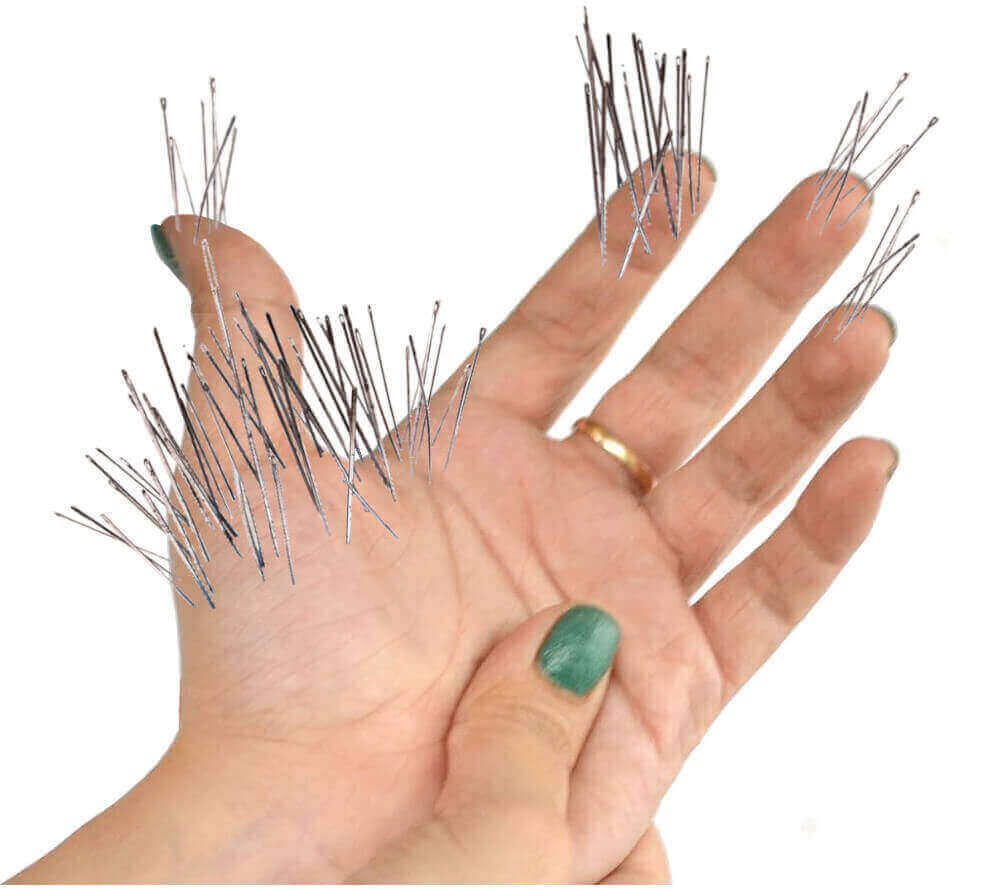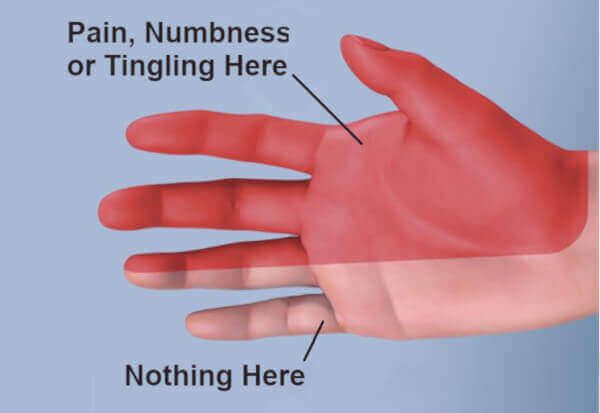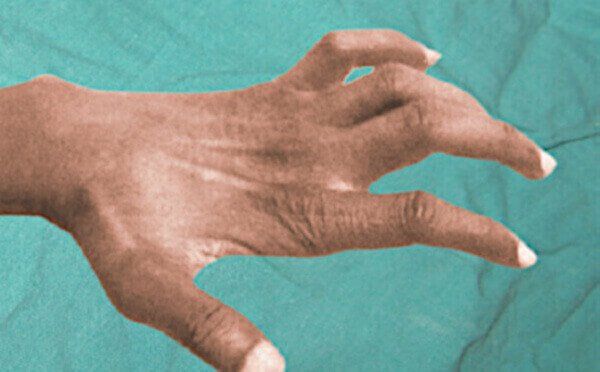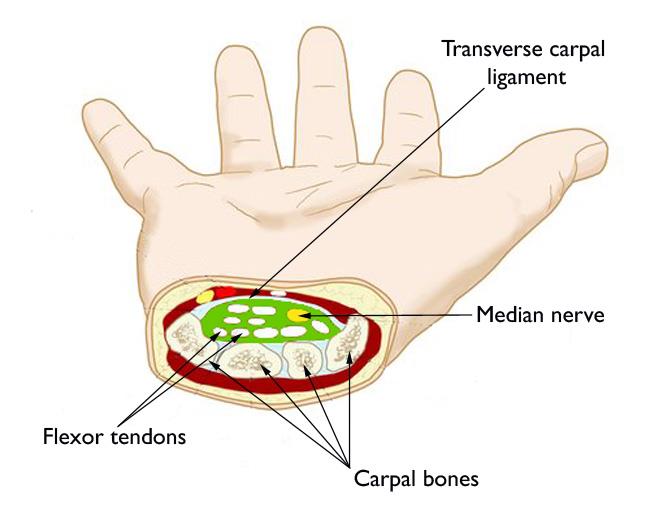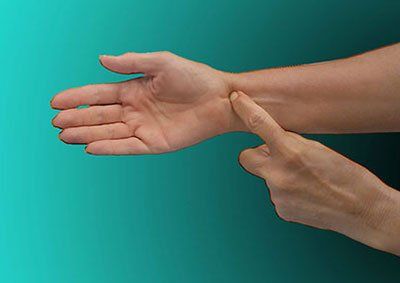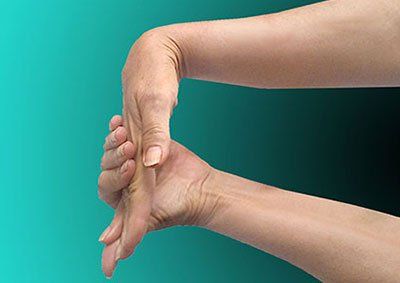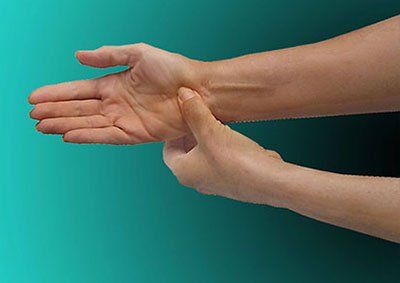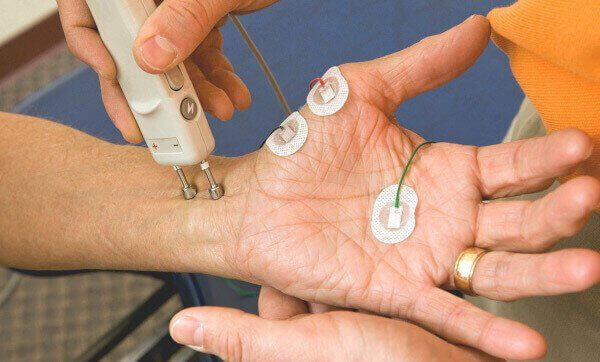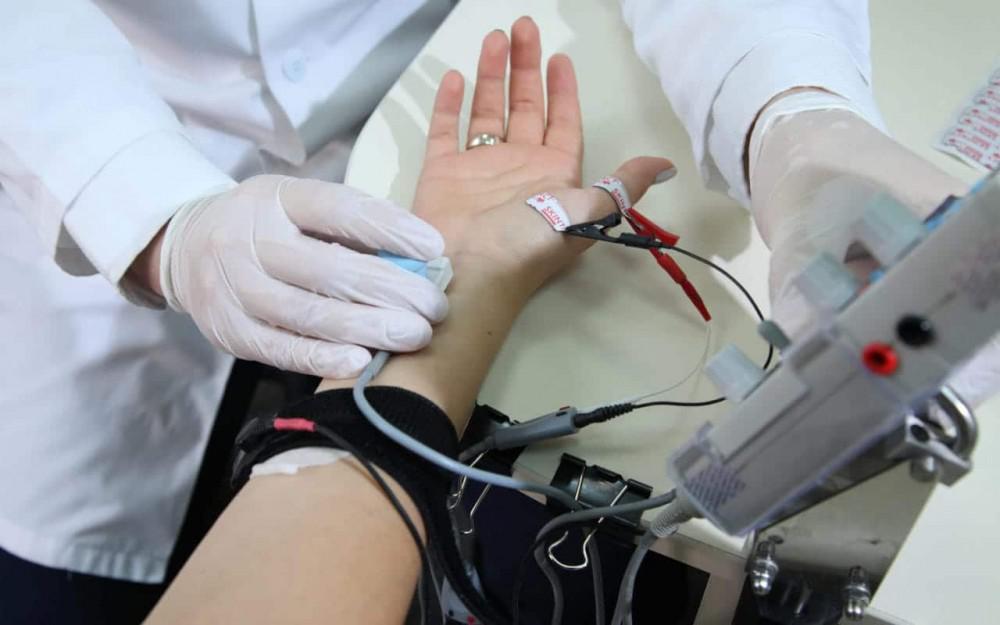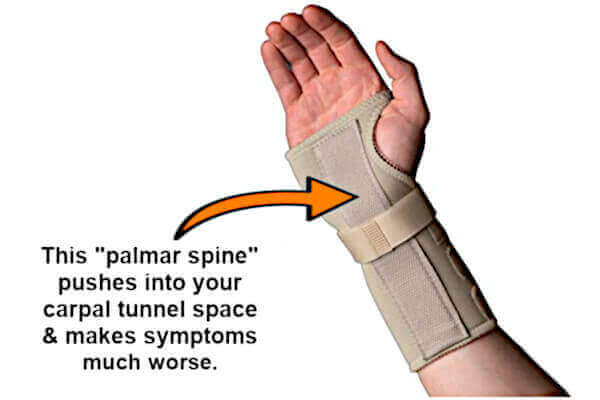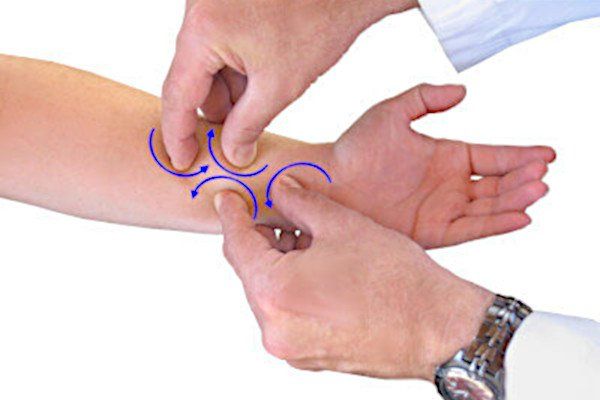Your Guide to Carpal Tunnel Tests
There are two basic kinds of carpal tunnel tests:
provocative
and
electrodiagnostic. The provocative tests are manual exams, which your doctor performs. But you can also perform them on yourself. The electrodiagnostic tests requires special equipment and must be performed in the doctor's office.
The provocative carpal tunnel tests are composed of the individual Tinel, Phalen, and Durkan tests. Holding the hand in a certain position or tapping the wrist will "provoke" symptoms if you have carpal tunnel syndrome.
The electrodiagnostic carpal tunnel tests are composed of the individual nerve conduction test and the electromyogram (EMG). They measure the electrical health of the nerve responsible for causing carpal tunnel syndrome.
This article describes each one of these test. It also explains what to you can expect from each test and what the results mean.
Signs you have carpal tunnel syndrome
Your carpal tunnel tests are performed once you've established you have symptoms of this disorder. Those symptoms occur in your fingers and palm, but not your little finger. The illustration below indicates where these symptoms most likely occur. Signs of carpal tunnel syndrome in these areas are:
- Pain
- Numbness
- Itching
- Burning
- Tingling (pins and needles)
- Feelings of puffy fingers
- Weakness
- Soreness
- Shooting electric shocks
- Hand clumsiness
Signs of carpal tunnel syndrome first appear while the hand is resting. This is why patients are often awakened during a deep sleep to shake out the numbness in their fingers.
Another sign carpal tunnel is knocking at the door is when your hand feels awkward or clumsy while handling objects. People are aware of a change in their ability to open car doors, turn a door knob, or grasp a drinking glass.
Picking up small objects like keys or coins is also awkward. Tying s shoelace, buttoning a shirt or even using a comb seems clumsy.
As carpal tunnel syndrome becomes more advanced, symptoms intensify. They also appear during the day, when the hand is working. Pain can be unbearable. Numbness is often described as "crushing" or "punishing". Doctors call this stage
severe carpal tunnel syndrome.
But that's not the end of the disorder. Carpal tunnel syndrome can get
even more intense and severe. Patients lose the ability to perform fine motor tasks like writing with a pen. Many have severe loss of grip strength, and constantly drop things from their grasp. Then they lose the ability to sense hot and cold temperature in your fingertips.
Finally, end stage carpal tunnel syndrome
is when the median nerve has died. Patients experience catastrophic loss of hand function. The thumb muscle wastes away.
Most patients also exhibit a phenomenon known as "claw hand". That's where the hand forms a claw shape when at rest due to the lack of median nerve input.
Within 6 months of symptoms appearing on the first hand, approximately 80% of patients will see symptoms appear on the other hand, too. Doctors refer to this "two-sided" disorder as
bilateral carpal tunnel syndrome.
Risk factors for carpal tunnel syndrome
The primary risk factors for getting carpal tunnel syndrome are not well understood by medical science. However, we do know that certain conditions favor your getting this disorder. These are called "risk factors" and include:
Perhaps the most often-cited risk factor is performing stressful hand activities. When your hands are strained, the tendons react and cause the area to inflame and swell. As discussed below, this is the
root cause of carpal tunnel syndrome.
So which activities cause such hand stresses? You can perform slow and forceful hand motions (like lifting weights). Or you can perform rapid and repetitive motions like typing or using a scissors.
This is why the following professions are known to have a high incidence of carpal tunnel syndrome:
Get the correct diagnosis!
Your doctor will perform carpal tunnel tests once he or she is satisfied that your symptoms match those of the disorder. Those symptoms are described above.
Why is it important to be sure of the diagnosis? It's because you don't want to be treated for carpal tunnel syndrome if you have another disorder!
There are several common "mimics" of carpal tunnel syndrome. Doctors can easily (and mistakenly) diagnose you with carpal tunnel syndrome when you actually have:
The
nightmare scenario
is being diagnosed with carpal tunnel syndrome but having one of these other disorders. And then you're wrongly
referred to carpal tunnel surgery!
Sound impossible? Actually, studies show that carpal tunnel syndrome is
frequently misdiagnosed. Some estimates are that misdiagnoses occur in over
70% of patients.
That means over 70% of patients undergo carpal tunnel surgery unnecessarily!
Causes of carpal tunnel syndrome
So what's the actual cause of carpal tunnel syndrome? You might be surprised to find out that they're caused by damage to your
median nerve. And that damage happens as a result of
swollen flexor tendons.
The
flexor tendons of
the hand pull on your fingers to enable curling and gripping. They also allow you to play a piano, hold a scissors or lift heavy objects.
But those tendons can become strained very easily. You can strain them in dozens of ways. The most common examples are:
- Moving your fingers rapidly and repetitively (e.g., typing)
- Frequently lifting heavy objects (e.g., moving furniture)
- Performing rapid and prolonged pinching motions (e.g., using a scissors)
- Gripping tightly for prolonged periods (e.g., using a shovel)
- Performing extensive grip-and--release motions (e.g., scanning groceries)
Any one of these actions can produce tremendous stress on your tendons. In fact, it's technically called
repetitive stress injury or RSI.
As tendons undergo stress injury, they
inflame and swell.
As they do so, they push against the adjacent median nerve. This is a major nerve of the hand. When it's injured (or crushed by tendons) it reacts by giving you all of the
symptoms of carpal tunnel syndrome.
Provocative carpal tunnel tests
The provocative carpal tunnel tests are the Tinel, Phalen, and Durkan tests. Doctors perform these tests if they suspect you have carpal tunnel syndrome.
Note that you can also perform these provocative tests on yourself if you follow the instructions below.
But
it's always
better
if you have another person (a partner) perform the tests on you. The results will be more accurate.
Tinel test
Phalen test
Durkan test
Electrodiagnostic carpal tunnel tests
Electrodiagnostic carpal tunnel tests are usually conducted in 2 parts. These are the nerve conduction test and electromyographic test (also called EMG). Both of these tests must be performed by your
carpal tunnel doctor because electronic equipment is needed.
It's important to mention that these electrodiagnostic tests are only used to
confirm
the above provocative carpal tunnel tests. The doctor should not use them alone to establish a diagnosis of carpal tunnel syndrome.
The reason is because both electrodiagnostic tests often give "false positive" results. In other words, they are
not more accurate than the above provocative tests.
Nerve conduction test
Electromyography (EMG) test
Nonsurgical carpal tunnel remedies
The
American Academy of Orthopedic Surgeons regulates and advises doctors about carpal tunnel surgery. They also specifically ask doctors to have their patients try
ALL
nonsurgical remedies first, before considering
carpal tunnel surgery.
Using nonsurgical remedies first is important because they work in over
90% of patients. In contrast, carpal tunnel surgery is only about
50% successful (by the second year).
The primary nonsurgical remedies recommended are known as B.R.E.M. This stands for Brace, Rest, Exercise, Massage:
- Brace your wrist at night
- Rest your hand
- Exercise your fingers and hand
- Massage your wrist area
Brace your wrist at night
Rest your hand
Exercise your fingers and hand
Massage your wrist area
Conclusion
Two basic types of carpal tunnel tests are used to determine if you have this painful condition. These are
provocative tests
and
electrodiagnostic tests.
The provocative tests are composed of the Tinel, Phalen, and Durkan tests. These are "manual tests" where the doctor (or you) try to provoke symptoms by tapping, bending, or squeezing your hand. If symptoms occur during the tests, it means you likely have carpal tunnel syndrome.
The electrodiagnostic carpal tunnel tests are composed of the
nerve conduction test and
electromyography test
(also called EMG test). These tests use surface and needle electrodes. A doctor must perform them. If they show abnormalities in the function of your median nerve, then it confirms that you likely have carpal tunnel syndrome.
There are several nonsurgical ways to treat carpal tunnel syndrome. These remedies should be used before surgery is ever discussed. That's because they effectively relieve symptoms in most patients.



